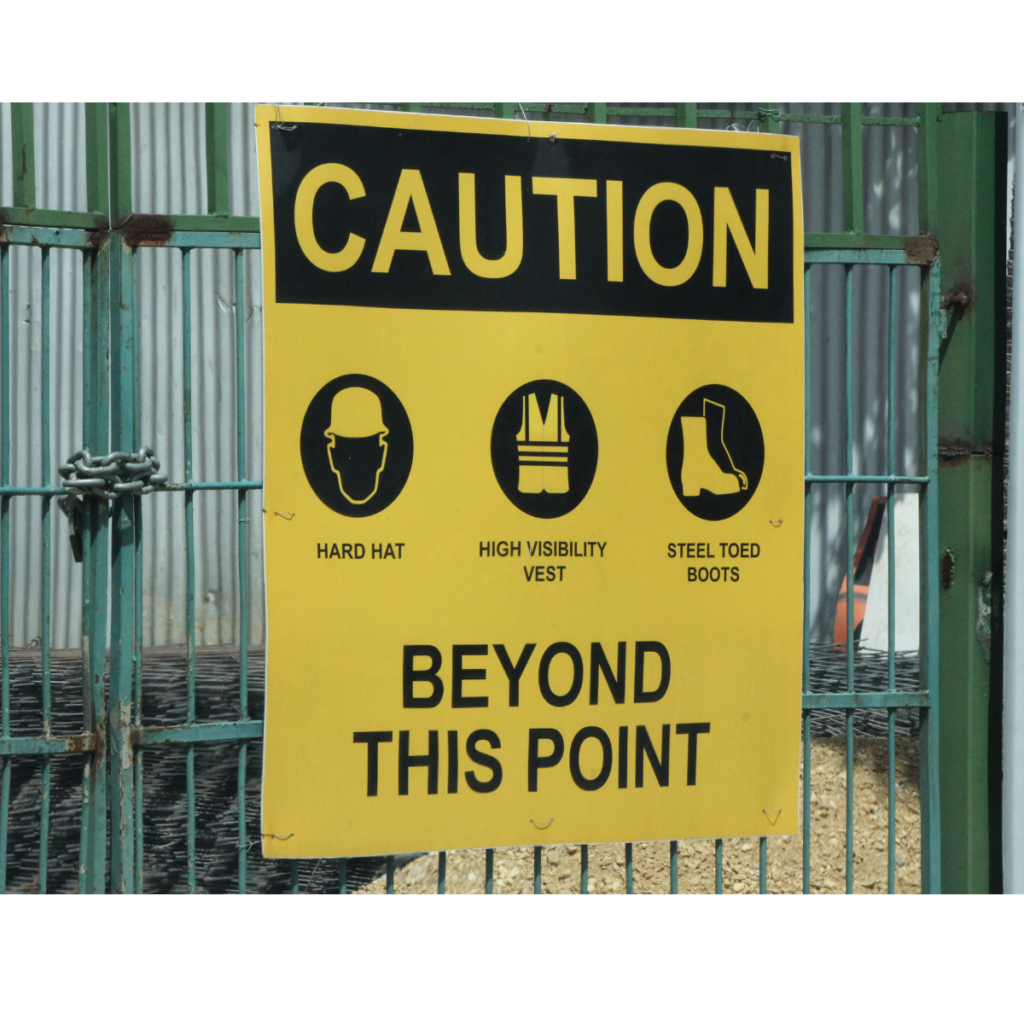Warehouse safety is of paramount importance in any industrial setting to ensure the well-being of workers and the efficient functioning of operations. Taking the right measures to improve the safety in your warehouse is an ongoing task for every successful logistics company
Warehouse accidents have the potential to cause fatalities, severe injuries, and lost productivity.
Thus, putting strong safety measures in place is essential to reducing hazards and establishing a secure workplace.
3,347 fatal workplace accidents occurred in the European Union in 2021, according to data taken out by Eurostat in October 2023.
Eleven fewer deaths occurred this year than the year before.
Working in a warehouse can be risky due to various hazards. Risks associated with loading and unloading duties, accidents involving moving machinery, and physical strain from lifting big objects are some prevalent threats.
It’s critical to provide explicit training, establish rules for safely operating equipment, and increase awareness of potential risks in the warehouse in order to keep everyone safe.
The purpose of the article is to provide practical guidance. It gives you actionable warehouse safety tips for enhancing safety measures in warehouse environments.
Something that our training platform can offer.
The ultimate goal is to reduce the risk of accidents, injuries, and workplace hazards, fostering a safer and more secure working environment for warehouse personnel.
Measure 1: Comprehensive Employee Training
In any warehouse setting, employee training plays a pivotal role in ensuring safety and preventing accidents. Proper training equips workers with the knowledge and skills needed to identify potential hazards, operate equipment safely, and respond effectively in emergency situations.
Importance of Training For Warehouse Safety
Safety training for warehouse operations is of paramount importance due to its multifaceted benefits. Firstly, it is crucial for preventing accidents since it equips workers with the necessary know-how to recognise and mitigate potential risks in the warehouse setting.
By instilling a culture of safety awareness, such training significantly reduces the likelihood of accidents, injuries, and even fatalities, thereby safeguarding the health and well-being of employees within the safe warehouse environment.
Additionally, training guarantees adherence to pertinent safety laws and guidelines, including those established by agencies like the Occupational Safety and Health Administration (OSHA).
Following these rules promotes a safer workplace as a whole in addition to satisfying legal obligations.
Workers who obtain thorough safety training are better able to follow defined procedures, which lowers the possibility of breaking the law and facing consequences.
Elements of Effective Safety Training Programs
Programs for safety training are essential in warehouse environments because they help employees develop a culture of safety.
These extensive courses address several important subjects, such as regulatory compliance and danger recognition.
Training in warehouse hazard awareness is crucial because it enables employees to recognise possible hazards such as forklift operations and high-traffic areas.
Employees can prevent accidents and injuries by being aware of these hazards and taking proactive efforts to prevent them.
An additional crucial topic addressed in safety training is proper storage practices. Best procedures for handling and properly storing commodities in a warehouse are taught to staff members.
In addition to reducing the chance of accidents, proper storage methods enhance the effectiveness of warehouse operations. Workers can keep a clean and safe workplace by using this knowledge.
Ongoing Training and Refresher Courses
For warehouse operations, refresher courses and ongoing training are priceless resources that guarantee staff members remain knowledgeable and skilled in their positions. In contrast to one-time training events, continuous learning and skill development are part of ongoing training, which helps participants stay up to date with changing industry standards and best practices. These programs are a preemptive way to fill up knowledge gaps, boost output, and keep warehouse employees performing at a high level.
Businesses can gain from investing in refresher courses and continuing education in a number of ways.
First of all, it makes it easier for staff members to stay current on innovations and technology in their industry, which helps them swiftly adjust to modifications in machinery or procedures.
Maintaining operational effectiveness and competitiveness in the fast-paced commercial world of today requires this flexibility.
Measure 2: Implementing Proper Signage and Labels
Implementing proper signage and labels is crucial for maintaining safety and efficiency in a warehouse environment. Effective signage serves as visual cues that convey important information to workers and visitors alike.

Importance of Clear Communication in a Warehouse
In any warehouse, effective communication is vital for ensuring safety, productivity, and efficiency.
However, language barriers can pose significant challenges, particularly when it comes to understanding instructions. This is how you can ensure your warehouse workers understand your instructions.
Effective communication acts as the conductor, harmonising the movements of equipment, materials, and personnel.
By facilitating clear communication between team members, warehouses can significantly improve productivity and reduce downtime.
Some facilities have reported up to a 30% decrease in downtime simply by enhancing communication among staff members.
Effective communication not only fosters a safer work environment but also enhances employee morale and engagement.
As warehouses expand, employees may feel disconnected from each other and from management. Clear communication channels, powered by the right technology, can bridge these gaps, fostering stronger relationships and a more positive work culture.
For warehouses conducting guided tours as part of their customer acquisition strategy, clear communication is essential for making a positive impression on prospective clients. Malfunctioning communication equipment can lead to embarrassing mishaps during tours and presentations. Investing in quality communication systems ensures that tours run smoothly, leaving a lasting positive impression on potential clients.
Types of Signage and Labels for Different Hazards
In a warehouse environment, it’s crucial to use appropriate signage and labels to communicate various hazards effectively. Here are some common types:
- Warning Signs: These signs alert workers to potential hazards in specific areas, such as “Caution: Wet Floor” or “Danger: Forklift Traffic.”
- Fire Safety Signs: Fire safety signs indicate the location of fire extinguishers, fire exits, and other firefighting equipment. They also provide instructions on what to do in case of a fire emergency.
- Chemical Hazard Labels: Chemical hazard labels are used to identify containers of hazardous substances. They additionally provide information about their contents, such as the chemical name, hazards, and safety precautions.
- Personal Protective Equipment (PPE) Signs: PPE signs remind workers to wear the necessary personal protective equipment in specific areas. Or when performing certain tasks, such as “Hard Hats Required” or “Safety Glasses Must Be Worn.”
- Emergency Exit Signs: These signs indicate the location of emergency exits and escape routes and provide guidance on how to evacuate the building safely during an emergency.
By using a combination of these signage and labelling strategies, warehouses can effectively communicate various hazards to workers and visitors, helping to prevent accidents and injuries in the workplace.
Regular Maintenance and Updates of Signage
Regular maintenance and updating of signage as safety measures are critical aspects of warehouse safety protocols.
Signage plays a major role in effective communication within the warehouse by informing staff members about hazards and safety protocols, among other critical information.
Warehouses reduce the possibility of mishaps and misunderstandings by maintaining these messages through frequent maintenance.
Another important factor supporting the necessity of routine signpost maintenance is visibility. Signs may become less obvious over time due to fading, damage, or obstruction from dust and debris.
Warehouses make sure that signage is readable and noticeable even in crowded or poorly lit areas by performing routine inspections and maintenance procedures including cleaning and repair.
In addition, it is imperative to maintain signs regularly to guarantee adherence to safety guidelines and regulations. Signage may need to be updated to reflect new regulations as they become necessary.
Measure 3: Investing in Proper Warehouse Safety Equipment
Ensuring the safety of employees is crucial in warehouse environments. Purchasing the right safety gear is essential to reducing risks and averting mishaps.
Personal Protective Equipment (PPE), material handling equipment, fire safety equipment, ergonomic equipment, and safety signage and markings are examples of essential safety equipment.
To minimise workplace hazards and create a secure working environment, each of these categories is essential. The safety of warehouse employees and the enhancement of operational efficiency are contingent upon the appropriate selection, upkeep, and application of safety equipment.

Importance of PPE (Personal Protective Equipment)
A variety of Personal Protective Equipment (PPE) is necessary in warehouses to guarantee worker safety. Helmets for head protection, protective gloves for hands, safety glasses for eyes, safety footwear for feet, earmuffs or earplugs for hearing protection, and reflective vests or shirts for high visibility are examples of common types.
PPE is crucial in warehouse environments due to the numerous hazards workers face daily. These risks include loud noises, sharp edges, falling items, and chemical splashes. PPE that is chosen and used correctly serves as a barrier. It lowers the chance of disease or injury and guaranteeing adherence to safety rules.
An Overview of the Benefits of PPE to Workers:
PPE lowers the risk of cuts, burns, and eye injuries by shielding employees from a variety of industrial dangers. By reducing exposure to dangerous substances and averting long-term health problems, PPE protects the health of workers. Workers who use personal protective equipment (PPE) are more likely to prioritise their well-being while completing activities and to develop a culture of safety awareness. Workers feel more confident and productive when they know they are well-protected by PPE, which raises morale and production.
Warehouses may promote employee well-being and create a safer work environment by supplying and monitoring personal protective equipment (PPE) and guaranteeing its effective use. For safety precautions to continue to be effective, regular maintenance and inspection of safety equipment are essential in warehouses. During these inspections, an auditing checklist is used to methodically evaluate the state and performance of safety equipment, especially personal protective equipment (PPE).

Measure 4: Establishing a Culture of Safety
Developing a safety culture in warehouses is essential to guaranteeing both the profitability of the company as a whole and the welfare of its workers.
Placing a high priority on safety not only helps to avoid mishaps and injuries but also boosts output and lowers medical bills and lost time.
Furthermore, a dedication to safety enhances an organization’s reputation, attracting stakeholders and employees alike.
Rewards and recognition as culture measures are essential in helping warehouse workers understand the value of safety.
Acknowledging groups or individuals for exceeding safety goals or exhibiting excellent safety behaviour might inspire others to follow safe procedures.
Bonuses and other financial incentives might provide as additional motivation for upholding stellar safety records or proposing creative safety enhancements.
A safer workplace can also be achieved by offering training opportunities in return for active involvement in safety programs.
It is crucial to have open lines of communication when reporting safety concerns in order to recognise hazards and take immediate action.
Establishing platforms or procedures that let staff members anonymously report safety concerns promotes openness and gives them the confidence to raise concerns without worrying about retaliation.
This method aids in the early detection of possible hazards, enabling prompt interventions and enhancements to the warehouse’s general safety regulations.

Measure 5: Regular Safety Audits and Inspections
Maintaining a safe working environment in warehouses requires regular safety audits and inspections.
Frequent audits are essential for spotting possible risks in the warehouse setting and implementing the right measures to ensure the safety for workers and processes.
Audits assist in identifying current dangers or possible risks that could jeopardise safety by methodically assessing a variety of workplace factors, including tools, procedures, and employee behaviors.
By being proactive, management can reduce the possibility of accidents or injuries by acting quickly to rectify problems.
Creating a safety inspection checklist ensures thorough and consistent evaluation of safety measures.
Using checklists enables organized inspections which ensures no important details or safety precautions are missed.
They facilitate the standardisation of the inspection procedure, which makes it simpler to spot violations of accepted safety guidelines and put the required remedial action in place.
Maintaining and raising safety standards in warehouses requires continuous improvement through feedback and remedial measures.
Responses from safety inspections and audits offer insightful information about areas that require improvement or remedial measures.
Warehouses can address issues and prevent the recurrence of safety hazards. This is ensured by implementing corrective steps in response to audit findings analysis and fast resolution. This iterative process of feedback, analysis, and action fosters the constant improvement of safety procedures. Ultimately, it makes the working environment safer for all warehouse employees.
Warehouse Safety with how.fm
The implementation of employee training, frequent safety audits, investment in safety equipment, clear communication through signage, and the development of a safety culture are essential for improving warehouse safety.
By putting these strategies into practice, warehouses may reduce risks, stop mishaps, and guarantee a safe working environment for everyone.
It’s critical to understand that everyone in the company shares responsibility for warehouse safety; it is not just the management’s or safety experts’ obligation.
Embracing safety as a core value and integrating it into daily operations creates a safer, healthier, and more productive environment. This is important for all employees working in warehouses.
We at how.fm recognise that safety must come first in warehouse operations.
Our cutting-edge training platform provides interactive, adaptable training modules. These are intended to raise awareness of potential hazards, encourage best practices, and guarantee adherence to safety laws.
how.fm enables businesses to improve workplace safety cultures, lower workplace accident rates, and create a safer working environment for staff members by utilising technology and interesting educational content.

